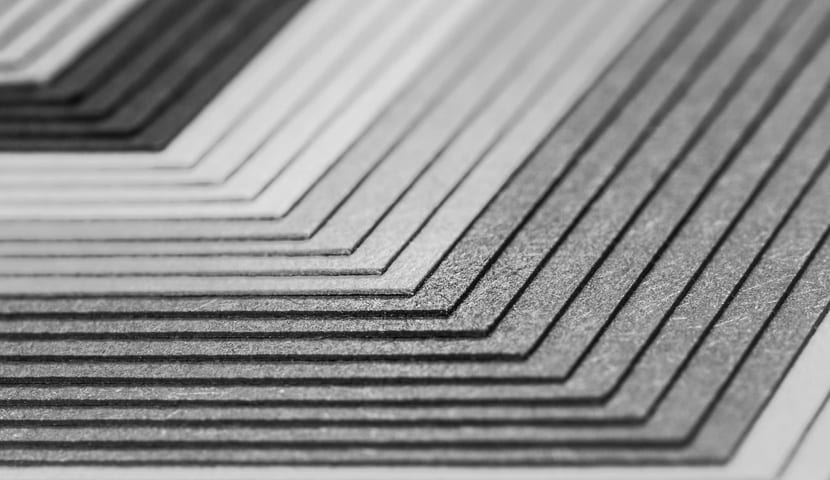
Standards for paper size have existed differently at various times just like in different countries. And although today there is an international standard, we can go to different countries on the planet to find different series of paper sizes such as "letter" for what would be countries in the Americas, as we could say of others like the Philippines.
Keep in mind that the size of a paper affects the paper for writing, stationery, cards and other types of printed documents. Among these paper sizes is the international standard that encompasses the C series of ISO 269. Like ISO 269, ISO 216 specifies the international standard for paper sizes used in most countries in the world, although we can put some exceptions such as Canada, the United States, Mexico and the Dominican Republic.
The dimensions of the A series
The dimensions of the A series of paper sizes, which are defined by the ISO 216 standard, are given in the table below with the diagram both in millimeters and inches. If we want the measurements in centimeters, they can be obtained by dividing the value of the millimeters by 10.
The A-series paper size chart offers a visual representation of how sizes relate to each other. A simple example is A5 which is half the paper size of A4, while A2 would be half A1. In this way we could better understand the sizes and make us aware of them to use the one we need for all kinds of objectives.
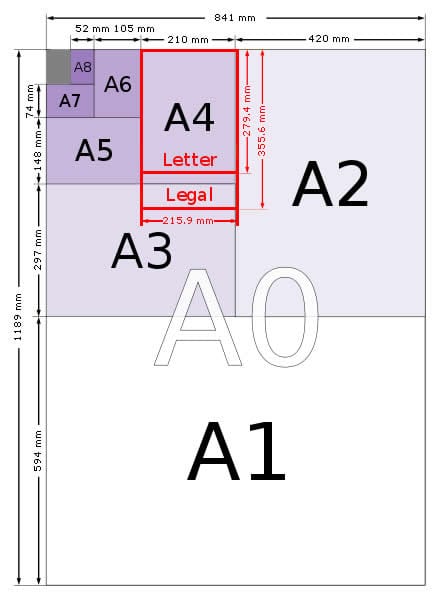
These are them measurements of each of the sizes:
- 4A0 size: 1682 x 2378 mm.
- 2A0: 1189 x 1682 mm.
- A0: 841 x 1189mm.
- A1: 594 x 841mm.
- A2: 420 x 594mm.
- A3: 297 x 420mm.
- A4: 210 x 297mm.
- A5: 148 x 210mm.
- A6: 105 x 148mm.
- A7: 74 x 105mm.
- A8: 52 x 74mm.
- A9: 37 x 52mm.
- A10: 26 x 37mm.
Sizes larger than A0, 4A0 and 2A0 are not defined by ISO 216, although yes they are used for oversized papers. These formats are based on the German standard DIN 476, which was the basis for what is ISO 216.
These sizes are being used in all parts of the world which would include the United States, Canada and parts of Mexico. A4 size has become the standard for letters in countries where you are fluent in English. In Europe it has also been used since the middle of the XNUMXth century.
Paper B
The sizes of the B paper series also are defined by ISO 216 and you can see perfectly how it is defined, both in centimeters and inches in the image below:
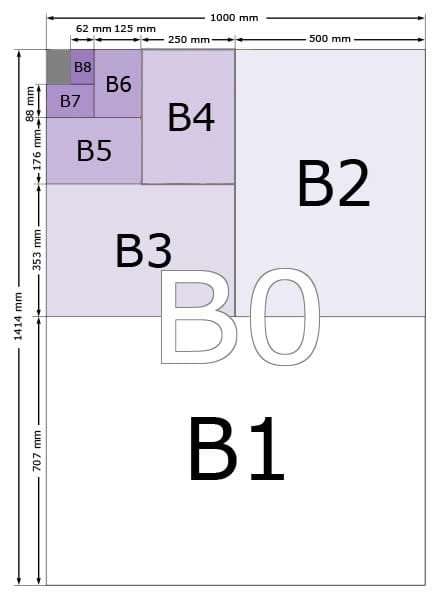
The sizes are these:
- Size B0: 1000 x 1414 mm.
- B1: 707 x 1000mm.
- B2: 500 x 707mm.
- B3: 353 x 500mm.
- B4: 250 x 353mm.
- B5: 176 x 250mm.
- B6: 125 x 176mm.
- B7: 88 x 125mm.
- B8: 62 x 88mm.
- B9: 44 x 62mm.
- B10: 31 x 44mm.
This type of series B were created with the intention of providing paper sizes which were not covered by series A, but which also use the index of 1: roo2. Sizes B are defined by size B (number), being the geometric meaning of A (number) and size A (number-1).
This system has the objective of help the increase and reduction of documents where the enlargement from A to B is the same as B to A.
There are a number of exceptions for the uncut sizes B and B2 + and B1XL. They are not defined by ISO and they exist for a specific industrial need. Its dimensions are these:
- B1XL: 750 x 1050mm.
- B2 +: 530 x 750 mm.
Paper C
Like the two other series, we shows the measurements in centimeters and inches of the sizes of the C series of envelopes. The diagram shows the size of each when compared to a sheet of A4 paper. US and North American envelope sizes are not covered by ISO 2016.
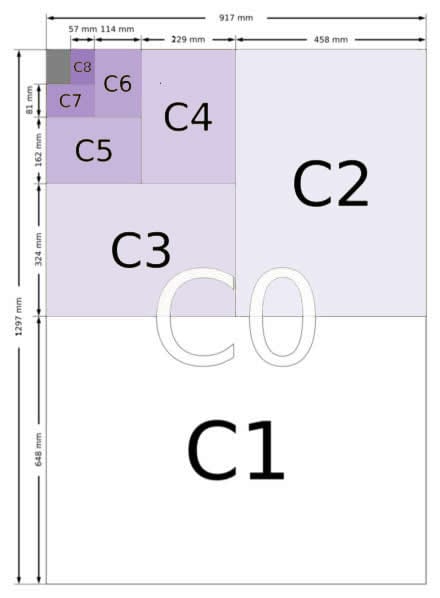
The sizes are these:
- C0: 917 x 1297 mm.
- C1: 648 x 917 mm.
- C2: 458 x 648 mm.
- C3: 324 x 458 mm.
- C4: 229 x 324 mm.
- C5: 229 x 324 mm.
- C6: 114 x 162 mm.
- C7: 81 x 114 mm.
- C8: 57 x 81 mm.
- C9: 40 x 57 mm.
- C10: 28 x 40 mm.
Envelope sizes C are defined by the geometric meaning of sizes A and B with the same numbers. Dimensions C4 are the geometric mean of A4 and B4. To be clear, the geometric mean of a set of strictly positive numbers is the Nth root of the product of the N elements. A little math never hurts.
What it produces is a size between the two that get a letter keep the A series paper the same size, so a C4 letter is perfect for an A4 sheet of unfolded paper.
In the images below you can find the differences of the letters C4, C5 and C6 compared to A4 size. In the first image we have a C4 letter that can contain an A4 sheet, the C5 letter that can contain an A4 folded in half and the C6 letter that can contain an A4 folded in half twice, which would be an A6 sheet.
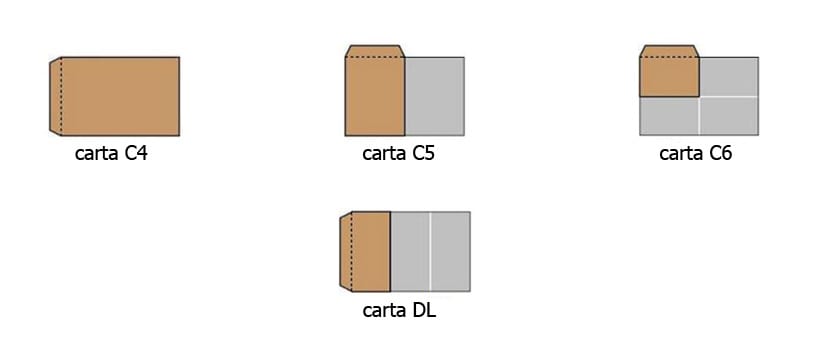
Now we can understand better because the sizes of the cards refer to the size of the same for A4, A5 and A6.
Letter size DL
One of the major uses for business letters is DL format which does not fall under the C series sizes, as they have a different aspect ratio. This format originated in Germany in the 20s and was known as DIN lang. This size is defined by ISO standards for letter sizes.
The dimensions of DL letter are 110 x 220 mm and will be able to hold an A4 sheet of paper folded into three equal sections parallel to its shorter sides.
American paper sizes
North America, which includes the United States, Canada, and parts of Mexico, is the only area of the first world that does not use the ISO 216 standard. They use these types of sizes:
- Half letter: 140 x 216 mm.
- Letter: 216 x 279 mm.
- Legal: 216 x 356mm.
- Legal Junior: 127 x 203mm.
- Tabloid: 279 x 432 mm.
It should be mentioned that A4 size is the equivalent of US Letter, so that we can make a simpler relationship. It was ANSI (American National Standards Institute) that defined a regular series of paper sizes based on the Letter format, with a series of specifications ranging from A, B, C, D and E sizes.
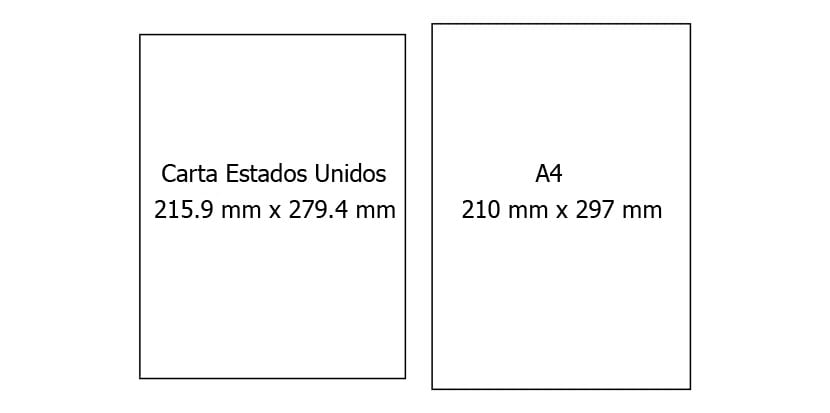
These are their sizes:
- W: 216 x 279mm.
- B: 279 x 432mm.
- C: 432 x 559mm.
- D: 559 x 864mm.
- E: 864 x 1118mm.
As well size B + included which has dimensions of 329 x 483 mm. Other sizes are architectural papers that have ratios of 4: 3 or 3: 2. These are ratios similar to those used in computer screens.
Newspaper sizes
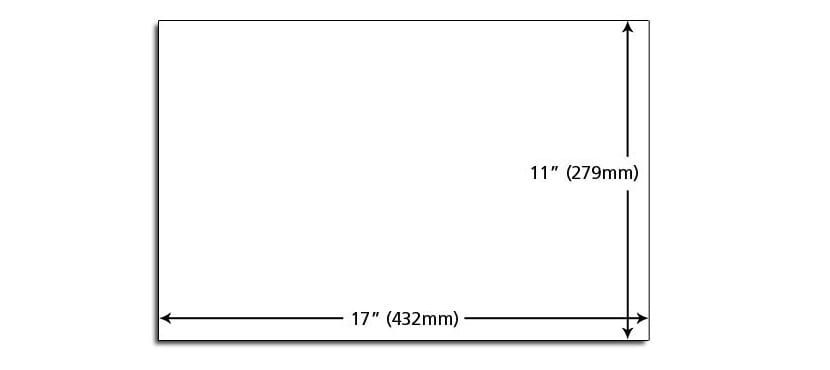
The newspapers have been printed in a wide variety of sizes with the 'Broadsheet' standard which is based on 600 x 750 mm. This term derives from the singular pages of political satires and ballads sold in the streets, which were very popular after England imposed a tax on newspapers back in 1712. We are facing a size that is becoming less and less popular.
Berliner is another newspaper size and it is 315 x 470mm. A format used by newspapers in Europe. We also have the tabloid size which are 280 x 430mm and which refers to the middle of the Broadsheet. His story goes by the term tabloid journalism which compacted the stories into a small, easy-to-read size.